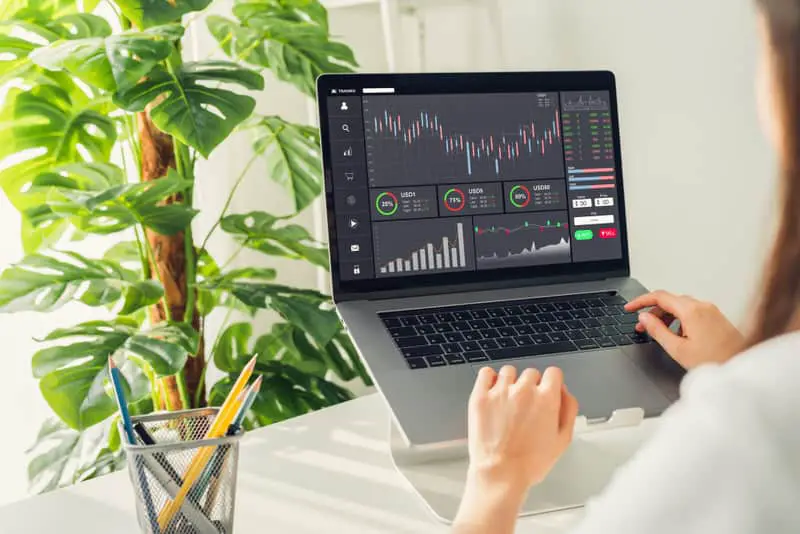The primary purpose of venturing into an investment is to gain some returns on your investment. In some cases, we embrace the idea of accelerated returns with minimal risk, especially when trading.
As an investor seeking ways to increase your returns, you need to understand what is involved when trading, the type of trading, and everything involved. This knowledge will guide you in ways to increase your potential returns.
Let’s look at Margin trading versus Options trading and understand the difference and make the most of improving our trading activities for better returns.
Margin Trading
Margin trading is the buying and selling of securities using a third party’s funds, usually the broker. Compared to other trading accounts, margin accounts give you the ability to enter into positions larger than your account balance, allowing you to leverage your positions.
Basically, margin trading enhances your trading results with the goal that brokers can get more considerable benefits on effective trades.
This capacity to expand trading results makes margin trading particularly mainstream in low-unpredictability markets, especially the global Forex market. In any case, margin exchanging is also used in stock, commodity, and cryptocurrency markets.
Difference Between Cash Account And Margin Account

In a cash account, all trades are made with accessible cash or long positions. When buying securities in a cash account, the investor must deposit some money to settle the trade—or sell some existing position on the same trading day—so cash proceeds are available to resolve the buy order. Cash accounts are pretty straightforward.
However, a margin trading account gives you the ability to trade with more than your invested funds. You can borrow and leverage based on the amount you have invested.
Margin trading allows you to do more with the money borrowed from your broker. In margin trading, you can purchase securities according to your purchasing power, including your investments and loan from the broker.
Margin Trading – Buying and Selling
Let’s say you have $2,000 in cash and buy $4,000 worth of stock that trades at $20 per share.
You can invest $2,000 of your money and borrow an additional $2,000 from your broker to buy 200 shares, and you’d own $4,000 worth of stock. Your net balance will still reflect like you have $2,000, but it would show up as $4,000 in stock and a $2,000 margin loan from the broker.
If the stock moves in your favor by rising from $20 to $22, that’s a 20% increase from your purchase price.
At this point, your 200 shares initially worth $4,000 will now be worth $4,400, and your account balance will be a total of $2,400 (that is $4,400 in stock less the $2,000 margin loan). The 20% increase in price has equally increased the value of your account by 40%.
Margin has the same effect if the price drops and moves against your speculation.
Using the same example, if the share price drops from $20 to $16, Your 200 shares will be worth $3,200, and your account balance will reflect a value of $1,200 (that is $3,200 less the $2,000 margin loan). That’s a 40% decrease to your account value on only a 20% decrease in the stock price.
The Risk Of Margin Trading
As an investor, it’s essential to understand what you are getting into with a margin account, especially the risk of margin trading.
Loss Of Investment
When trading on a margin account, you can potentially lose not just your investment but even more in securities.
A lot Riskier In Declining Market
Margin Accounts is riskier in a declining market, as skittish brokerage firms can demand that margin account holders push cash or securities into their accounts to cover potential investment losses and do it at short notice.
Margin Call
Notable among the risk and disadvantages of margin trading is the Margin Call.
Margin Call exposes you to the risk of losing more money than you otherwise would have.
When you have an open and running margin loan position and the market is against you, your broker can demand you pay more cash or sell out positions you currently own to satisfy the call.
This type of call is issued when the broker notice that you don’t have enough fund in your trading account to cover the margin or loan or when you are running low on the trading fund. If you can’t cover the call, your broker will liquidate your positions to get it covered.
In some cases, your broker may start selling your positions to cover the margin. If the market moves against your speculated position and your stock falls to as low as $0, you will still be indebted to the broker for the borrowed fund.
It’s important to note that if you don’t have sufficient cash or securities to sell, the brokerage reserves the right to sell the stock purchased on margin, without having to notify the customer, even if the financial loss incurred is pegged to their account.
You Have No Say When You Are In Trouble
The broker doesn’t give you the option to chose which security to sell when it’s time to sell to cover losses. They use their discretion.
Margin Accounts Can Be Tricky
A broker can boost margin account requirements at any time, and you have to comply, even if you were just notified. If a broker issues a margin call, you can’t ask for time to gather up the money needed to boost your account balance.
Options Explained

An option is a contract that makes it possible for you as an investor to buy and sell underlying instruments like securities, ETF, or even indexes at predetermined prices over a certain period. Exchange (buying and selling) of options is done in the options market.
When you buy options that allow you to purchase shares at a later time, they are called the “Call Option.” On the other hand, when you buy options that enable you to sell shares at a later time, they are called “Put Options.”
The significant difference between shares and options is the small matter of ownership. Owning options does not represent ownership in a company.
Options are considered a lower risk because you can walk away at any point.
Options are monetary instruments that are subsidiaries dependent on the value of underlying securities like stocks. In contrast to futures, the holder isn’t needed to purchase or sell the asset if they decided not to.
Option Trading
Options trading is simply buying and selling options. It’s mostly done with securities on the stock or bond market and ETFs, and others. These buying and selling can only be done through brokerage accounts.
As the buyer of options, you will be charged an amount called “premium” by the dealers for a right. Suppose the market prices become unfavorable for option holders. In that case, they will let the option expire worthless, thus ensuring the losses are not higher than the premium.
The option buyer reserves the right to make the seller do whatever the contract states within the option’s time frame. Once the buyer exercises the option, the seller must abide by the instructions set by the option.
An example of a Call Option
A call option gives the purchaser the power to buy a set of securities (shares) at a predetermined price and at a time before a specific expiration date. The seller is obligated to sell the stock to the option buyer if they exercise the option.
As the name suggests, You as the buyer have the right to exercise the contract, but you are not under any obligation to do so. You can only exercise the option when the conditions are favorable.
For instance, if an option holder pays $200 per share for a particular stock (also known as the strike price or exercise price), and the underlying is stock traded in the market for $100 per share, the option buyer will not exercise that option because it would make no sense to pay $200 for shares he could buy in the open market for $100.
The decision would be different, though; if the market share price were $350, the buyer would exercise the option contract because $200 would be a bargain compared to the prevailing share price.
If you buy a call, you purchase the right to buy the stock at a specific price. The upside potential is unlimited, and the downside potential is the premium that you spent. You want the price to go up a lot so that you can buy it at a lower price.
The Put Option Holder
Additionally, the Put Options give the buyer the right to sell stock at particular prices, shielding the option buyer from losses in a stock position or profiting from a stock falling.
When you buy a put, you have the right to sell a stock at a specific price. The upside potential is the difference between the share prices. Let’s say you buy the right to sell at $15 per share, and it drops to $12 per share. The downside potential is the premium that you spent. You want the price to go down a lot so you can sell it at a higher price.
You may combine numerous call and put options strategies that will turn a profit under various circumstances.
You can also choose to be a Call Writer or a Put Writer.
Call Writers
As a Call Writer, when you sell a Call, you sell the right to buy to another person.
The positive potential is the premium for the option, while the negative potential is unlimited. You want the price to be the same or even fall a little so that whoever buys your Call doesn’t exercise the option and force you to sell.
Put Writers
As a Put Writer, when you sell a Put, you sell the right to another person.
The positive potential is the premium for the option, while the negative potential is the amount the stock is worth. You want the price to stay above the strike price so that the buyer doesn’t force you to sell at a higher price than the stock is worth.
In more precise terms, When you buy an option, your negative potential is the premium you incurred on the option.
However, if you sell a Call, there are unlimited negative potentials. When you sell a Put, the downside potential is limited to the value of the stock.
Takeaway
There will always be that argument of which is better when it comes to Margin versus Options Trading, and in the end, the investor or trader has to decide which option works best. This decision will be influenced by how you handle and manage risk if you are risk-averse or have the appetite to risk more for more significant gains.
Margin trading offers the potential of making good money by borrowing from the broker to trade more, but on the downside, you could lose all your investment and more while you have no control. Compared with Options Trading that has been described as low risk and low returns.
What’s your take? I would love to talk more on this topic and see how we can make the most of our investment decision.

